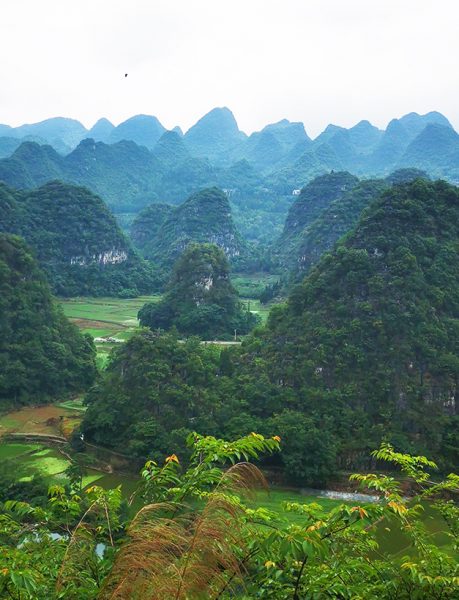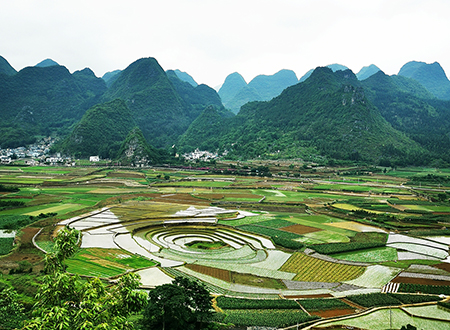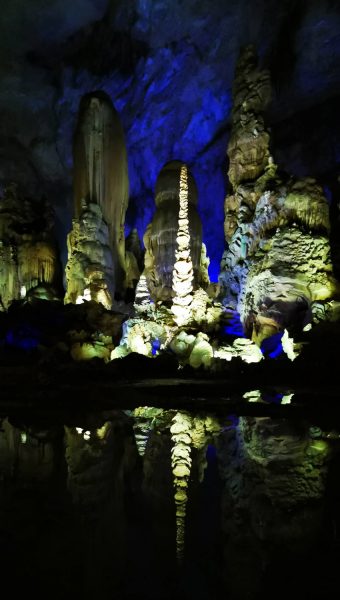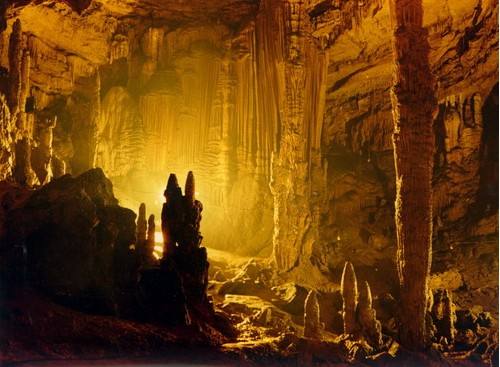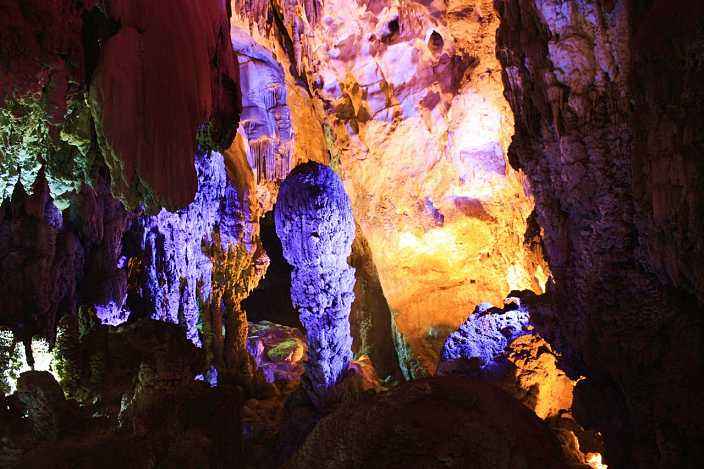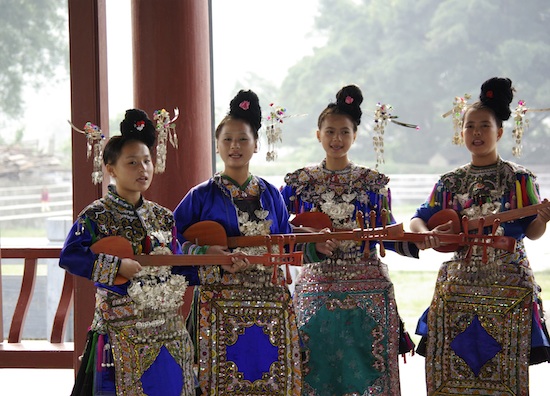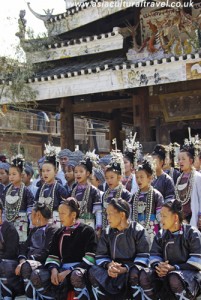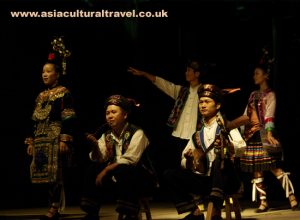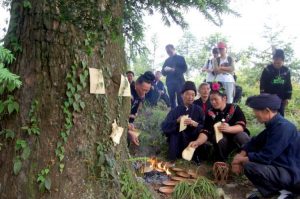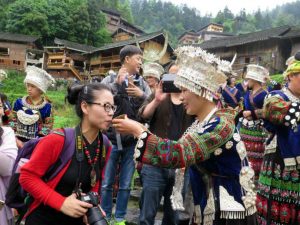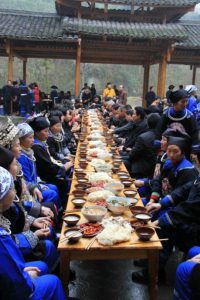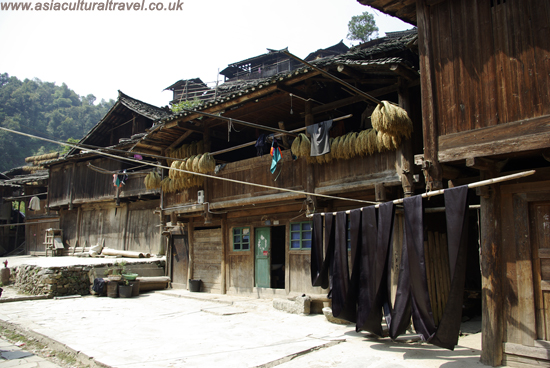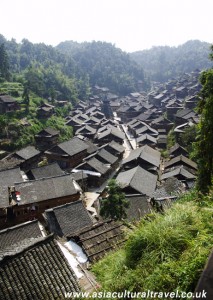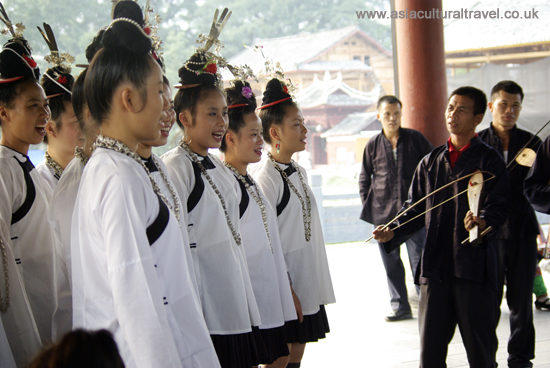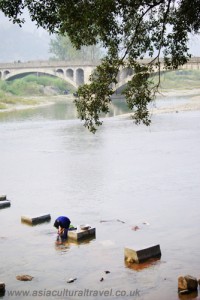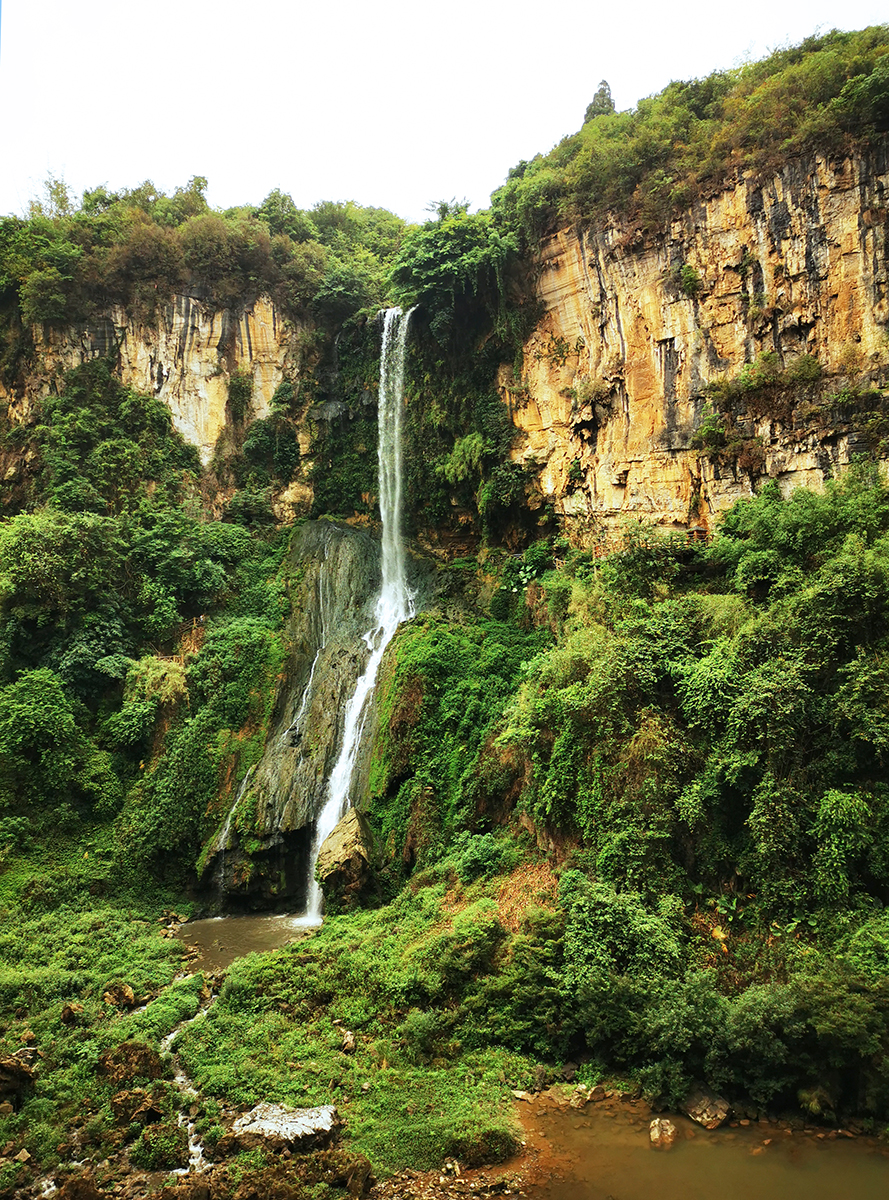
Carved into the rock over millions of years by the surging Maling River, the Maling River Gorge is about 75 kilometers (47 mi) long and has an average depth of between 200 to 400 metres (656-1312 ft.). Encompassed within its grandeur, you’ll find 18 beaches, 20 bends in the river, 30 deep ponds, over 60 bays, and more than 100 waterfalls. It is renowned throughout China for its myriad of Karst rock formations and its plethora of breathtaking waterfalls, which lend the region an ethereal quality. In-keeping with this fairytale aesthetic, calcium deposits on the cliff-faces sparkle in a variety of colours and are said to appear like elegant tapestries lining the gorge. Many of the waterfalls within the gorge are at least 100 metres (328 ft.) in height and cascade down the Karst rock-face with a captivating grace.
While taking a cruise or rafting down the river may seem like the obvious choice to make the most out of your trip, visitors can also hike along the gorge thanks to plank walkways that have been built halfway up the cliffs on both sides, which offer a closer view of the stunning rock formations peppered throughout the cliff-face. Arguably the most beautiful and famous attractions on offer with the Maling River Gorge are the Pearl Waterfall and the Rainbow Waterfall.
The Pearl Waterfall is so-named because it is located on a high cliff, meaning that its droplets are often dispersed by the wind and give the appearance of sparkling pearls floating in the air. By contrast, the Rainbow Waterfall is actually made up of a series of eight waterfalls that all cascade down nearby cliff-faces. Since they are all within such close proximity to one another, the area surrounding their base is frequently shrouded with mist and the splashing water can cause rainbows to appear when the sun is shining.
When it comes to rafting, the waters within the gorge are considered reasonably gentle, so don’t expect white-water rapids. While battling rapid waters may be exciting, you should never forget the wise words of the ancient Chinese proverb: “Water can not only float a boat, it can also sink it.” It is a great place, however, for those who are not familiar with rafting and want to give it a try. The only exception is the section of the river from Zhaojiadu to Wanfeng Lake, which is extremely dangerous and therefore only open to professional rafters, not the general public.
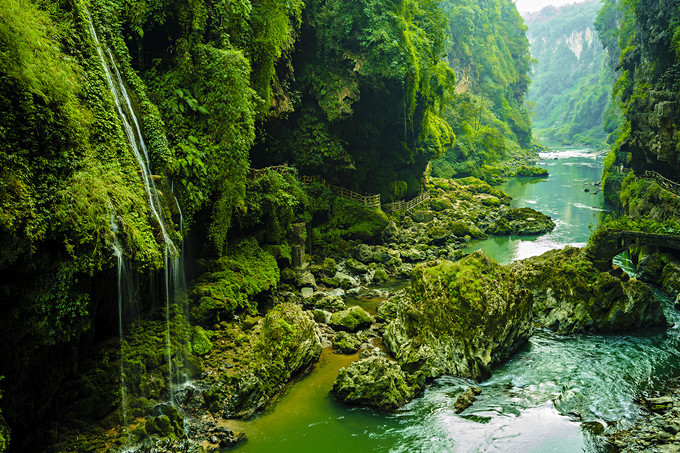
The gorge itself actually belongs to a much larger attraction known as the Maling River Gorge Scenic Area, which covers a colossal area of 450 square kilometres (174 sq. mi). Alongside the magnificent gorge, the scenic area includes a variety of natural gems, including the captivating Forest of Ten Thousand Peaks and the mysterious Wanfeng Lake. The region also bears great historical significance and once served as one of the ancient seats of human civilization. This venerable history is attested to by the 240-million-year-old Mesozoic Triassic “Guizhou Dragon” fossils that were found there and caves, such as Cat Cave and Zhangkou Cave, which bear signs of primitive human activity. In terms of more recent history, the scenic area is home to a group of tombs dating back to the Han Dynasty (206 BC-220 AD) and it was even crossed by Chairman Mao during the Long March (1934-1935).
The area has also been inhabited by the Bouyei people for over 300 years and remains a stronghold of Bouyei culture. There are a number of Bouyei ethnic minority villages that can be found within the scenic area, particularly in the western part of the Forest of Ten Thousand Peaks, known as Xifenglin or “West Peak Forest.” These villages serve as perfect resting points within the scenic area and are the ideal place to engage with authentic Bouyei culture.
Join a travel with us to explore more about Maling River Gorge:
